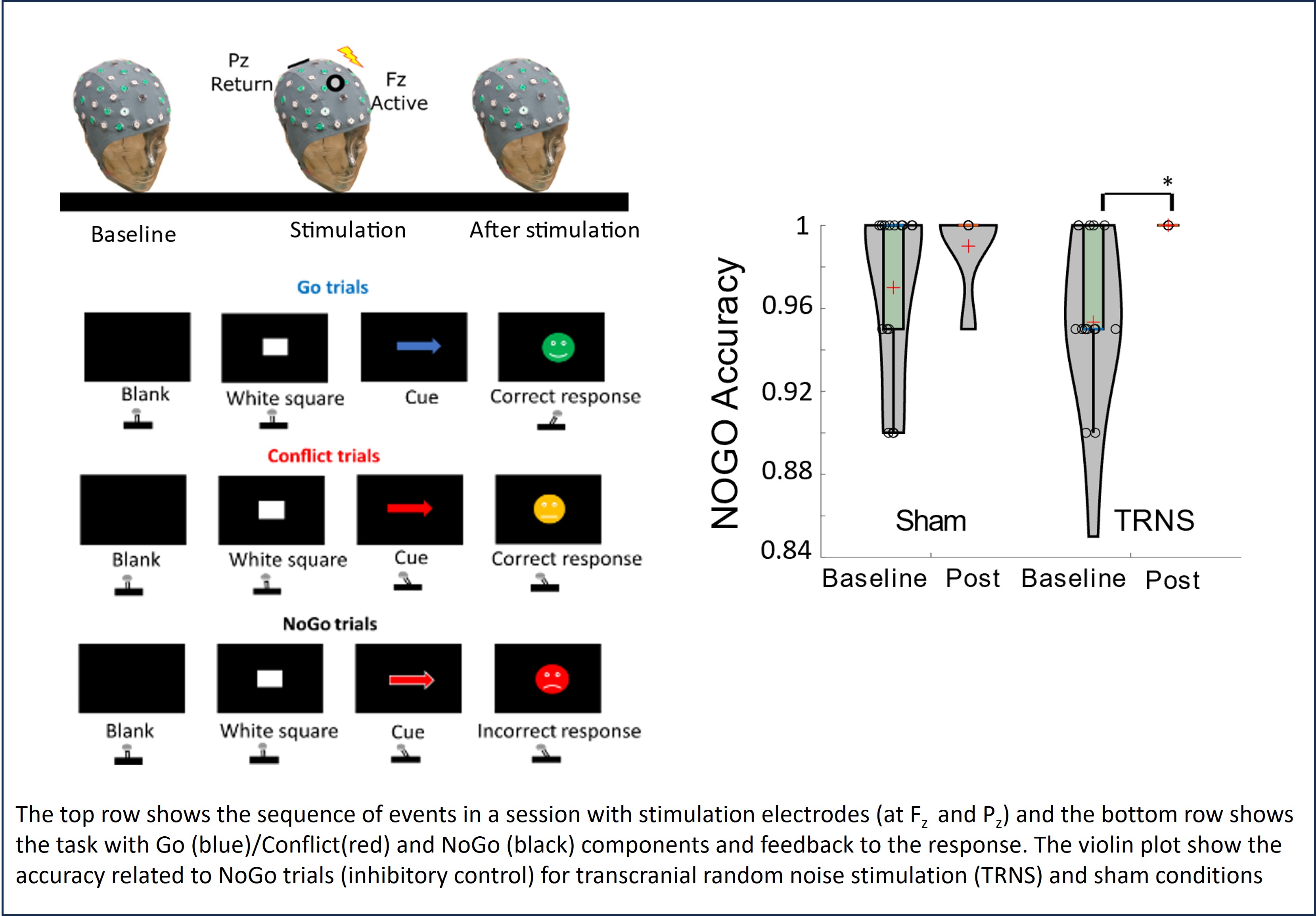Tuning the brakes - Modulatory role of transcranial random noise stimulation on inhibition.
Flexibly learning and adapting to external environments is integral to cognitive flexibility. This includes scenarios requiring the capability to withhold our actions. In this study, we used transcranial random stimulation, a form of non-invasive brain stimulation and showed improvement in inhibition-related behaviours and associated neural activity in terms of spectral power and intermittent bursts.
Related Content
Publication
2021. J Neuroeng Rehabil, 18(1):179.
Publication
2023. Brain Stimul, 16(4):1178-1185.
Publication
2020. Clin. Neurophysiol., 131(9):2086-2099.
Publication
2017. J. Neurosci., 37:4481-4492.

